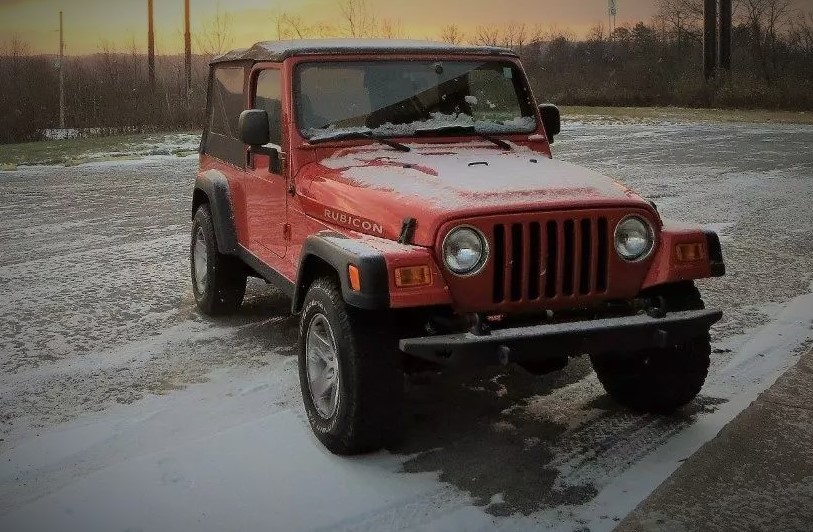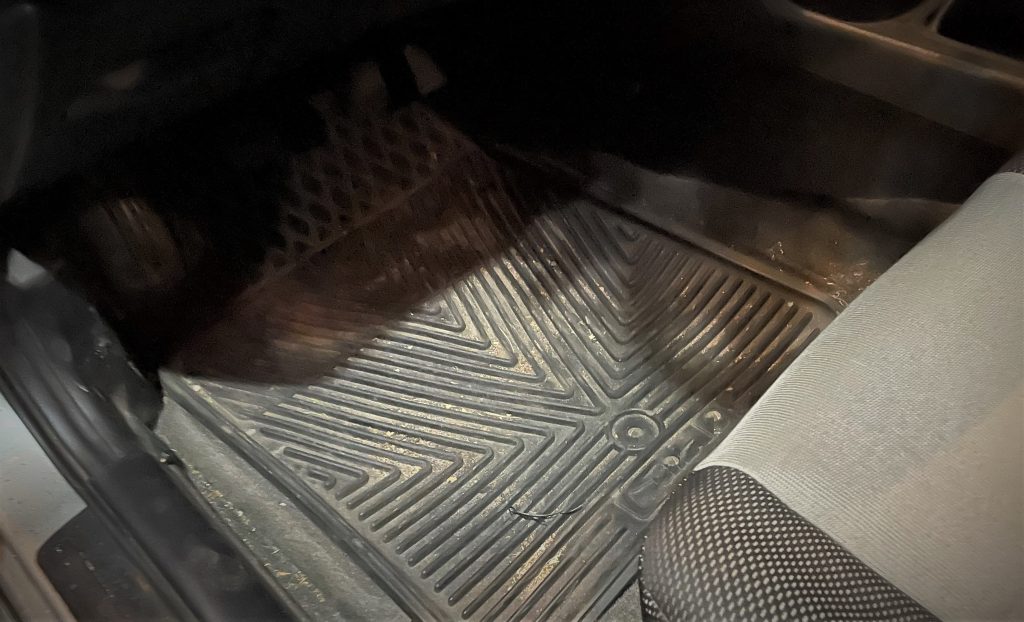OK, so you’ve done your homework and read our Winter Driving Checklist already. Then you did the requisite maintenance to make sure your ride is ready for cold weather—you’ve changed the oil, replaced the filters, and checked all of the fluids. The battery is fully charged and the alternator is working A-OK. The heater is heating, the defroster is defrosting, and the lights are lighting.
Yup, sounds like you’ve ticked the obvious boxes here.
But you really should go a bit deeper, because there are a few more (sometimes overlooked) factors to address before you’re ready to tackle any frozen roads. We admit, some of these are brutally obvious so, if you’ve already checked them, then good on you—but if you haven’t, grab your coat and get out there for a looksee now before the snow starts to really fly.

***
5 Things You Need to Examine for Cold Weather Driving
***
1. Tires

Ok, file this one under “well, duh.”
But here’s the thing—don’t just assume that, since your tires hold air and they’ve got some tread left, you’re ready to hit the proverbial slopes. That’s because tires that were “good enough” to get you around in nice weather can become downright hazardous in winter driving conditions.
Take tire pressure, for example. Check it often even if the tires look OK. When the temperature drops by 10 degrees, tire pressure drops one PSI. A loss of five PSI usually trips a tire pressure light—and obviously driving on under-inflated tires is a big no-no regardless of the weather.
Make sure the tires have sufficient tread depth too. Tread less than 2/32nds of an inch is considered legally worn out in most states. Get on your hands and knees with a flashlight and look for punctures, cracks, or splits. If you find any, the tire(s) is not safe and should be replaced immediately.
Your tire’s treadwear patterns can tell you plenty as well:
- Excessive wear down the center indicates over-inflation
- Excessive wear along the shoulders indicates underinflation
- Flat spots, usually caused by repeated hard braking and skidding
- Feathering and cupping, signs of too-aggressive driving and worn-out suspension parts such as shocks or struts
You may also find our tire wear infographic especially helpful too.
Make sure to get the wheels aligned and the tires balanced. Out of alignment wheels and unbalanced tires cause accelerated tire wear, drifting, and pulling.
Should You Use Winter Tires?
If you live in an area that sees a good amount of snowy or slushy conditions, consider getting a good set of winter tires. They are made with special rubber compounds and deep tread patterns that provide grip even when the thermometer dips below 45 degrees Fahrenheit.
According to the folks at Cooper Tire, you should put winter tires at all four corners to maintain vehicle mobility and control.
Tip! If you want to save yourself the hassle of mounting and remounting tires with every season, get a set of winter-only rims too. A plain set of aftermarket wheels will likely withstand winter’s onslaught better than your stockers and, as an added bonus, you get to keep your fancy (read: expensive) factory wheels clean for summer driving.
***
2. Windshield Wipers

A good set of wipers are the unsung heroes of winter weather driving. And nowadays you have a smorgasbord of wiper options to choose from too.
To ensure you’ve got the best winter windshield wipers for your car, truck, or SUV, we’ll break down a few of the common wiper types you’ll come across here.
- Conventional frame-style windshield wipers are the most budget-friendly options. They have a hinged metal frame to support the blade and provide six to eight evenly distributed points of contact with the windshield. They are susceptible to snow and ice buildup in the winter, which can reduce their effectiveness.
- Winter windshield wiper blades are frame-style blades with a rubber shell or boot that keeps snow and ice from gumming up the frame. Winter wiper blades are not recommended for warm weather use, because the rubber covering will crack or tear easily.
- Beam-style wipers are a one-piece design with a flexible plastic or steel beam that conforms to the curvature of your windshield. That allows the entire blade to apply even pressure on the glass and keep it cleaner. With no moving parts, a beam blade does not suffer from snow and ice buildup like a frame blade does.
Understanding Windshield Wiper Blade Material
Most wiper blades are made from natural rubber, which provides a good balance between performance and price. Silicone and silicone-covered rubber blades leave a thin, water-repellent film on the glass to help keep the windshield streak-free. You can also get graphite-coated blades that reduce friction for smoother operation and better cleaning, especially in sleet and heavy rain.
When Should You Change Your Wiper Blades?
The general rule of thumb is to replace wiper blades every six to 12 months. Periodically cleaning rubber blades with alcohol or glass cleaner will prolong their life. Silicone and graphite blades last longer but are more expensive than natural rubber. If you’re the forgetful type, those might be a better choice.
What Type of Wiper Blades Should You Use for Winter?
The type of wiper you use comes down to driving conditions. For example, frame wipers are fine for areas that don’t see much extreme weather. Winter blades are recommended for areas that get a lot of snow or slush, or use salt to clear the roads during the winter. You might have to try a couple of different wiper blades to find the one that works best for you.
Double Check Your Washer Fluid Pump Too
Don’t forget to check your windshield washer pump for proper operation. If yours won’t squirt, is making weird noises, or not doing its job effectively, you can usually pick up an affordable replacement pump from brands like ACDelco, Anco, Motorcraft, and Trico.
***
3. Serpentine Belts

Serpentine belts are wear items just like tires and wiper blades. As a general rule, a serpentine belt will last about 50,000 miles or five years. Heat and friction are belt killers—inspect yours for cracks, abrasions, and/or damaged ribs and replace it as needed. A quality serpentine belt tool is usually pretty cheap and is worth its weight in gold for this sort of thing.
Aside from normal wear, serpentine belt problems are usually caused by issues with accessory drive tensioners, pulleys, or bad accessory bearings. Here’s a list of belt symptoms and their possible causes:
- Belt Coming Off: pulley misalignment, belt misalignment, defective tensioner, or bearing wear in tensioner, idler or engine-driven accessories
- Squealing Sound: belt slipping
- Chirping Sound: accessory pulley misalignment
- Whirring Sound: defective bearing in tensioner pulley or idler pulley
- Grinding Sound: damaged bearings in driven accessory
- Rhythmic Noise at Engine Speed: delaminating belt backing, chunking of belt ridges, or foreign object embedded in belt groove
- Frayed Belt Edge: accessory pulley misalignment
- Polished Belt Edges or Glazed Belt Grooves: belt slipping
- Excessive Cracking: severe old age or defective tensioner
- Fluid Contamination: oil, power steering, or coolant leak
If you get any of these warning signs, inspect the belt tensioner, idler pulley, and accessory pulleys and replace as needed. A Dayco belt diagnostic kit will make short work of the inspection process—it’s also really handy if you have multiple vehicles with serpentine belt drives.
Here are two more articles that might be helpful too:
4. Hoses & Lines

We could write an entire story on hose and lines—in fact, we did. Several of them, actually:
- How to Inspect Your Vehicle’s Tubing, Lines & Hoses
- How to Pick the Best Flexible Fuel Hose
- How to Properly Plumb Your Vehicle
- Choosing the Right Fuel Lines
But for your winterization checklist, all you need to do is look for obvious fluid leaks in the engine compartment and under the vehicle. At minimum, inspect the radiator and heater hose; power steering hose; fuel system hose; brake hose and brake lines; and transmission cooler lines for cracks, splits, and holes, especially around clamped connections. Obviously, you’ll replace them as needed.
We made a handy fluid leak identification infographic that you’ll probably appreciate too.
***
5. Floor Mats

Is not having floor mats going to strand you at the side of the road in a blizzard? Nope—but a good set of vehicle floor mats will make winter driving more comfortable and protect your carpet from damage due to slush and salt.
Better yet, they can serve as makeshift vehicle traction mats in a pinch and could potentially help you out of a jam.
Regardless of your car, truck, or SUV, there’s a huge selection of floor and cargo mats to choose from. Some of the best winter floor mats we’ve come across are from brands like WeatherTech, 3D Maxpider, Husky Liners, and Westin. Not having to drive in snow-soaked shoes will do wonders for your peace of mind.
***
Do you have any tips on winter driving or vehicle prep to share? We’re all about learning new things here, so drop some sage advice on us in the comments section below.

Comments